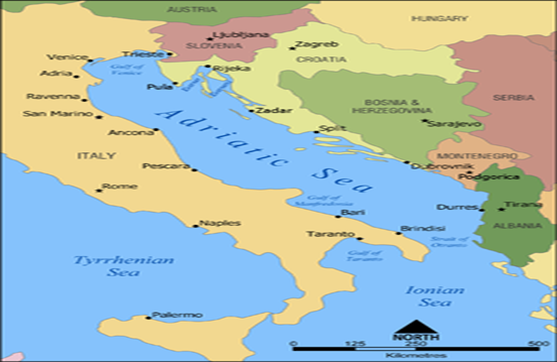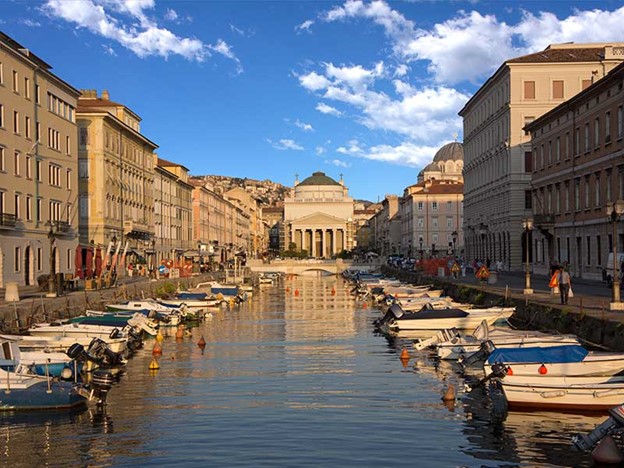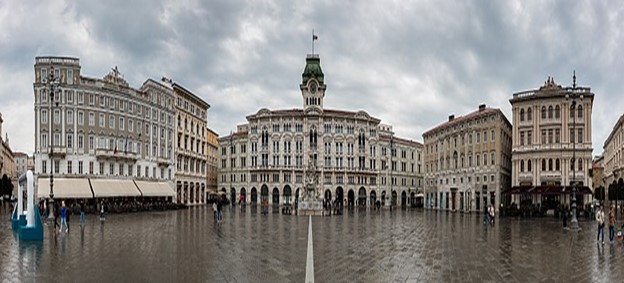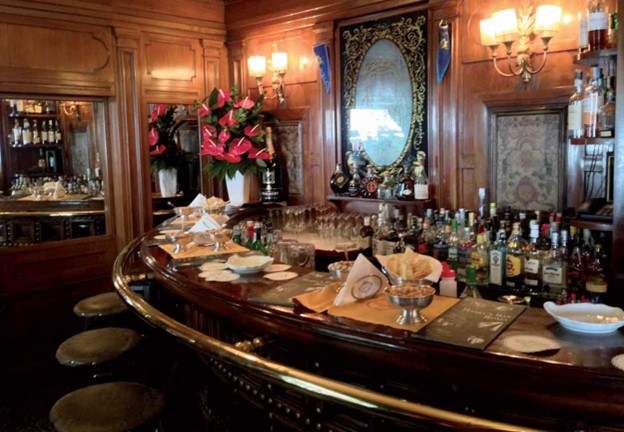

Author: Kent Moors, Ph.D.
In the last edition of Classified Intelligence Brief’s Spy Tales, I provided my annual recounting of the most difficult single occurrence during my years working in intelligence (“Memories,” Classified Intelligence Brief, May 25, 2022). As an operation in an insecure area collapsed, a close colleague of mine died rather than me.
As I noted last week, after some protracted conversations, “mother” allowed a truncated version of what happened and what came next. However, there remain some codicils. First, I cannot give the specific year this happened nor the exact location of the initial episode. Fortunately, I can provide more detail about what took place next in today’s Spy Tale installment.
Back to what embellishment I can provide on the events alluded to last week. They took place in the early 1980s in a location inside what was then Yugoslavia.
And here, as usual, some background is necessary,
The post-World War II nation of Yugoslavia had been stitched together by Josip Broz Tito, national hero of the war and the only president the Socialist Federal Republic of Yugoslavia ever knew.
Now Tito had emerged by the mid-1950s as an irritating impediment to Moscow as it cobbled together the Warsaw Pact in Eastern Europe against the rise of NATO in the West. Even before Stalin died in 1953, it had become a fatal feud. Tito had popularized a nationalistic communism, more interested in what was needed at home than in toeing a line coming from the Kremlin.
Several unsuccessful Russian attempts to assassinate him only enhanced his aura of strength among the Yugoslavs. Even maintaining the country itself had been quite a feat. It included ethnic nationalities that traditionally hated each other, had been in internecine fighting for centuries, and agreed to work in a quasi-union only because of the immense status of Tito.
Similar nationalistic communist movements in the early 1950s were forming in Italy, France, Spain, Portugal, and elsewhere among the communist parties in NATO members, threatening to make the Russian design for fifth columns in Western Europe amenable to Moscow more difficult to realize.
It was normal in those days for leaders in these parties to declare they were national patriots first and communists second. They meant it. The acute economic crises following the war had resulted in a fertile ground for Marxism and workers’ movements. But they never reached the revolutionary intensity necessary to usher in the further westward expansion of Soviet influence.
The US government and the agency spent considerable money and manpower to limit the communist successes in French and Italian elections, although party members still ended up as members of cabinets formed there. Washington had little choice but to be virtually the sole supporter in those days.
That is because in 1948 Winston Churchill (again UK Prime Minister) informed US President Harry Truman that London could no longer finance movements to prevent a communist takeover during the Greek Civil War and was unable to prevent Soviet incursions into Turkish territory. American took up the mantle in each case.
That resulted in both the Truman Doctrine (to oppose the expansion of Soviet influence anywhere, resulting in the policy of containment) and the Marshall Plan – the largest financial recovery program ever attempted, one of the main reasons Western Europe did not succumb to more radical political solutions.
The Greek communists were crushed in the Civil War. Washington would end up having no choice but to support a brutal rule by either the military or puppets of the generals in Athens. That model would unfortunately be copied in US approaches elsewhere in the world.
When it came to Kremlin policy, an inability to carve out political wins in Western Europe was one thing. But tolerating national dissidents within the Eastern European socialistic “family” was something else entirely.
That meant Yugoslavia and to a lesser extent Albania further south would remain thorns in the side of Soviet foreign policy. Albania moved closer to the Chinese Communist sphere of influence but would have limited impact on Russian objectives since it had no common border with the West (aside from a mountainous one with Greece).
Unfortunately, Albania would also be the target for some very ill-conceived and tragic efforts after World War II aimed at destabilizing the post-war communist rule there. These involved training thousands of Albanian exiles in the UK, smuggling them back into their homeland, only to have them rounded up and summarily executed.
Years later, the Brits put the embarrassing clandestine Albanian disaster along with other abject failures in a large bag labeled “Property of Kim Philby” and blamed it on the high-level MI6 officer who was the prize Soviet agent among the “Cambridge Five.” That never sat well with US intelligence, especially after the 1966 escape to Moscow by George Blake from the maximum-security prison at Wormwood Scrubs in West London.
We concluded the Albanian mess and some others (including the divulging of Operation Gold, the 1950s fabled tapping into Soviet military telephone lines beneath Berlin) were Blake’s work. The Soviet mole problem inside MI6 lasted at least a decade and a half after Philby took the rat line from Beirut to Moscow. Blake died in Moscow on December 26 of 2020, at the age of 98.
From the standpoint of agents sacrificed and significant operations blown, Blake may well have been the single most damaging Soviet agent in the UK, ever. As noted in an earlier Spy Tale (“A Rookie Learns the Ropes in Cambridge,” Classified Intelligence Brief,” April 28, 2021), I would meet him during my time in Moscow years later and found him an unexpectedly interesting conversationalist. He had also adjusted well to a life in Russia.
OK, back to Yugoslavia. Throughout more than thirty years after World War II, Tito would guarantee a critic in the center of what was supposed to be a united socialistic front against the evils of capitalism. That was enticing to the intel community in the West. Yet, the Yugoslav leader was no ally and had a separate agenda that veered toward setting up his idea of a personalized sphere of regional hegemony.
By the 1970s, there were indications that over the past several decades the Kremlin had made inroads within leadership of the Uprava državne bezbednosti (UDBA), as the Yugoslav state security administration was known from 1946 until 1991. This was Tito’s secret police. Not as sadistic as some of its other Eastern European “cousins,” it was still feared. Additionally, UDBA was used to assassinate several dozen opponents of Tito elsewhere in Europe.
The security apparatus connections were the way in for an ongoing Moscow-initiated attempt to remove or kill Tito, one that would attract some of the president’s domestic opponents into the developing web.
Most of the UDBA higher levels had been trained by Russian KGB and still retained close connections with them. Of course, this was also a field on which we would also have an active interest in playing. After all, it was an extension of KGB actions in an area where they had a limited local support system against a revered national icon. It demanded our own counterintelligence response.
A tense stalemate about the Adriatic Sea resulted; Yugoslavia on one side, Italy (and NATO) on the other. The dam burst on May 4, 1980 when Tito died.
A firestorm of activity then erupted leading to a deadly and protracted civil war, the breakup of Yugoslavia, ethnic cleansing, and a rapid acceleration of espionage activity in what was quickly becoming a political vacuum.
I was hardly a Yugoslav specialist but the counterintelligence elements here directed to the Russians meant I would be drawn from my base in London into what was going on in the Adriatic. That set the stage for what I recounted in last week’s Spy Tale.
As it turns out, “mother” has been pushing back more on what further I can say on that episode than on the basics portrayed in today’s tale.
Suffice it to say that the abbreviated rendition last week involved an operation to inject a network of agents (that is, foreign nationals spying for us) into the UDBA info sourcing apparatus to styme the Russian connection. It did not take place in the West, unraveled almost as soon as it was put in place, and ended up deliberately drawing our team into a deadly firefight on hostile terrain with no backup. It had been compromised almost from the get-go.
Had George Blake still been a player, I would have blamed it on him.
However, as noted last week, the aftermath was personally devastating, taking the life of a friend, and assuring that there would be payback.
So here, at long last, is how we got even.
It was seven months after the tragedy. I had only a few days earlier returned to London. In the interim, I had been reassigned briefly to HQ stateside, receiving my two medals from the op at a brief ceremony (with cake and “liquid refreshments” no less). Procedures then obliged the medals were promptly taken back and buried somewhere in the archives. It was only later changes in regulations that ultimately allowed me to obtain most of my awards permanently. Even then, it took over three decades and they were shipped (COD) in no particular order.
There was a strong push to settle the score. In the intervening period, UDBA had aligned (once again) with a KGB-sponsored operation to “turn” case officers and their equivalents in the West. To put it simply, they had renewed trawling to identify the outside intelligence personnel running Yugoslav operations and then attempt to force or entice them to spy against their own.
Throughout the Cold War, all sides were running MICE operations – named for the four primary ways (money, ideology, compromise, ego) of compelling an opponent to work for you. By the early 1980s, we concluded the first two were usually not useful. KGB and their Eastern European kin did not trust Western financed secret Swiss bank accounts and rarely decided that the Soviet system was based on antithetic ideas. They may have believed this but would not act on the basis of such a rejection of ideology.
Compromise was of greater benefit. This involved the fear that some shortcoming in character would be made known to superiors and result in loss of rank, imprisonment, or worse. However, ego was by far the most successful. Many field officers I would meet, regardless of his or her national intel agency, thought they were better than their superiors, had been unfairly denied promotion or a choice assignment, and carried an organizational grudge.
Emphasize how much you regard their tradecraft, pander to their self-regard, feed their anger, and offer them a way to show up their peers. Our “get even operation” had all of this but it also contained another element.
This time, we were not trying to recruit anybody. Rather, this was a mission designed to draw somebody in, plant incriminating material, leak it to his bosses, and then let them hit the eliminate button. Oh, we wanted him dead all right. But his side would do the honors, creating a bit of a “mole hunt” panic within the KGB-UDBA apparatus in the process.
It also had to be portrayed as a “false flag,” that is, as an exercise run by some other country. The action would be portrayed as Italian, even though it was entirely run by Americans. Now the UDBA had already been particularly successful in recruiting Italians and the KGB relied on this route.
They may have been allies of sorts, but the Servizio Informazioni Difesa (SID), Italian security and intelligence at the time, was corrupt and belching forth one scandal after another. It was more difficult to find somebody in SID who was clean than it was to identify an officer being paid by one or more foreign intel agencies.
We ran information moving up on one of our agent networks attesting that SID personnel could identify (for a fee, of course) who in the UDBA-KGB “family” was working for the CIA and compromising their penetration initiatives.
There is much in the way of particulars on how we set up this operation and why both the UDBA and KGB would believe it that I am constrained to leave out of this telling. In such operations it is always necessary to provide some accurate intel the other side could not easily obtain on their own, but which could be verified from their sources to confirm it.
That was done in an environment where all sides were pushing hard to figure out who was doing what in a post-Tito region.
The important part was to lure out the KGB officer in charge of the earlier episode that resulted in a colleague’s death. I needed him to be the point for a meeting. And we needed to be able to take him out without causing an incident that would result in a diplomatic embarrassment.
All these particulars are off limits for my narration here. But I can still sketch how it rolled out.
This one needed to take place on Italian soil yet done without SID knowledge. It also had to be close to Yugoslavia in a location often used for espionage activities.
Welcome to Trieste.
An old Hapsburg port from the late fourteenth century, Trieste is in the far northeastern part of the Adriatic on what is known as the Gulf of Trieste. The city is located on a narrow strip of Italy extending from Venice eastward. More importantly, Trieste is only 6 and 19 miles from what are today the borders of Slovenia and Croatia, respectively. When the events recounted here took place, both were tenuously still part of Yugoslavia.


Trieste has always been an interesting location where cultures and histories intersect, resulting in it being for centuries one of the great centers of literature and music. As a deep-water port, it remains a primary trading gateway to all Central and Northern Europe. It is sometimes still referred to as “Little Venice,” because of its arteries of waterways into the “old port” area.


With a current population of slightly more than 200,000, it has evolved into one of the most important research locations in Europe, an international school and university city, having one of the highest living standards found anywhere in Italy.
Trieste is one of the eight places on my list of international locations where I might be enticed to live out my days, should I ever choose to emigrate.
What was still at the time called the “Free Territory of Trieste” was a major struggle site between West and East during the Cold War. Given its proximity to Eastern Europe and Yugoslavia while located on friendly territory, the CIA there had an office larger than half of the capital cities in Europe. Operations would regularly begin here and move out to several hostile locations.
In the center of the “dry” part of Trieste is the Piazza Unitàâ di Italia. For the past forty years, this has been an upscale commercial location with expensive designer good outlets, fine restaurants, and plenty of places for those intent on being noticed. It is also where Harry’s Bistro is located.


A copy of a famous Venetian eatery (also named Harry’s), this was “Grand Central Station” for espionage in this part of the world.


Everybody in the business passed through it…and its bar was the epicenter.


Today, the three floors above comprise one of the most expensive “bistro” hotels in the city. But back in the 1980s, they were regularly the locations for clandestine meetings (and just as regularly bugged for same).
It was easy enough to draw attention to our false flag operation, since it would hardly be the first time that rooms in Harry’s upper levels had been the site for SID officers to sell secrets. We used Italians on the payroll for bait and the object of our interest tugged on the line almost immediately.
In the aftermath of Tito’s death, all parties were scrambling for information. He could hardly refuse. I stayed out of view (since the bastard knew my face from our previous less than cordial exchange). Nonetheless, the meeting was photographed from every angle with the photos and a partial audio of the conversation altered by the tech specialists.
The Russian was certainly amenable to receive the promised intel and would authorize the payment (we thought a rather modest US$20,000 request would grease the skids and make it believable). A second meeting was agreed to. Shortly after he made it back across the border, our incriminating package was on its way through a network on which UDBA was known to intercept material.
It included doctored photos of the meeting and our dear KGB colleague deeply involved in conversations with several parties, some of whom were known to the other side as CIA and NATO officers. The audio tape “confirmed” that the discussions were incriminating. Since we had previously started a mole hunt among their personnel, this would play into an already existing false narrative. The kicker was the source they relied on for the intercept. He was trusted by them but had been ours for years.
The Russian disappeared. By 1986, an agent within the state security apparatus provided material indicating that his file had been scrubbed. It included when he began service, positions up to the early 1980s, and then nothing.
He dropped off the face of the earth. I would have preferred personally to have put him six feet under it. But had to settle for what we could get.


Dr. Kent Moors
This is an installment of Classified Intelligence Brief, your guide to what’s really happening behind the headlines… and how to profit from it. Dr. Kent Moors served the United States for 30 years as one of the most highly decorated intelligence operatives alive today (including THREE Presidential commendations).
After moving through the inner circles of royalty, oligarchs, billionaires, and the uber-rich, he discovered some of the most important secrets regarding finance, geo-politics, and business. As a result, he built one of the most impressive rolodexes in the world. His insights and network of contacts took him from a Vietnam veteran to becoming one of the globe’s most sought after consultants, with clients including six of the largest energy companies and the United States government.
Now, Dr. Moors is sharing his proprietary research every week…knowledge filtered through his decades as an internationally recognized professor and scholar, intelligence operative, business consultant, investor, and geo-political “troubleshooter.” This publication is designed to give you an insider’s view of what is really happening on the geo-political stage.
You can sign up for FREE to Classified Intelligence Brief and begin receiving insights from Dr. Moors and his team immediately.
Just click here – https://classifiedintelligencebrief.com/







